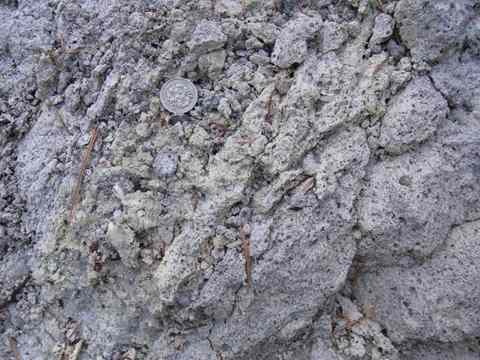Jigoku Pond
Arakawa, Aomori city, Aomori pref., Japan
Synonym
Jigokunuma
Occurrence
Sulphur deposit formed by volcanic gas near the Jigokunuma Explosion Crater of the Kita-Hakkoda Volcanic Group of the Hakkoda Caldera. The Hakkoda Caldera has been active since the early Pleistocene (1.0 Ma), and the Kita-Hakkoda Volcanic Group since the Middle Pleistocene (0.4 Ma). Three phreatic explosions were recognized from the Jigokunuma Explosion Crator: 680 yr B.P., and twice in 350 yr B.P. Ages of eruption were determined by radiocarbon dating.

Outcrop of tuff breccia erupted from the Jigokunuma Explosion Crater in 340 yr B.P. The porous grayish-white host is tuff breccia subjected to alteration by volcanic gas. The pale yellow parts are earthy sulphur formed from volcanic gas. Sulphur was formed by reacting H2S in volcanic gas with O2 in air:
2H2S + 3O2 >> 2H2O + 2SO2
SO2 + 2H2S >> 3S + 2H2O
Reported Minerals
Localities
- Ishizu Mine
- Agatsuma Mine
- Shirane Mine
- Numajiri Mine
- Jigoku Pond (Sulphur)
- Noboribetsu-Jigoku Valley (Sulphur)
Related Occurrences
- Halloysite zone (Alunite zone, Argillized zone)
- Kaolinite zone (Alunite zone, Argillized zone)
- Minamiite-Alunite zone (Alunite zone)
- Pyrophyllite zone